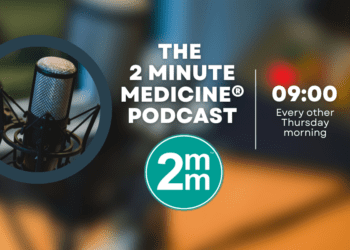Safety and immunogenicity of the oral, inactivated, enterotoxigenic Escherichia coli vaccine ETVAX in Bangladeshi children and infants
1. Enterotoxigenic Escherichia coli vaccination may provide significant immunogenic benefits in young children and infants in low- and middle-income countries with minimal associated toxicity.
Evidence Rating Level: 1 (Excellent)
Enterotoxigenic Escherichia coli (E. coli) is associated with diarrhea, stunting and significant morbidity and mortality in children, particularly from low-income and middle-income countries. A University of Gothenburg team has developed an enterotoxigenic E. coli vaccine (ETVAX) with strains of recombinant E. coli overexpressing the most prevalent colonization factors at higher concentrations. ETVAX was proven to be safe, provided significant fecal secretory IgA, and IgA antibody lymphocyte secretory responses across all colonization factors, along with immunologic memory when tested in Swedish adults. Its immunogenicity and safety were also proven in Bangladeshi adults. This large-scale, dose-escalation, age-descending phase 1/2 Bangladesh-based trial aimed to evaluate the safety and immunogenicity of ETVAX in children, with the primary objective of establishing the largest tolerated dose of ETVAX and the potential of the vaccine to induce mucosal and systemic immune responses against five primary antigens. Healthy children aged 6 to 59 months were deemed eligible and were randomly assigned using block randomization to receive ETVAX with or without a double-mutant heat-labile enterotoxin, or placebo. Two doses were administered two weeks apart across arms. The primary endpoint was safety and tolerability in children receiving at least one vaccine dose, with antibody response to vaccine antigens, defined as a minimum of a two-fold increase in antibody levels from baseline, was evaluated as a secondary endpoint. Overall, 430 children were enrolled and randomly assigned between December 2015 and January 2017, and all participants received at least one vaccine dose. The most common adverse event reported was emesis (52/430 participants; 12.1%). Only three serious adverse events occurred and were considered unrelated to the intervention. Most adverse events were reported as mild. While antibody responses were less frequent and of lower magnitude among younger children aged 6 to 11 months, most participants aged 12 to 23 months and 24 to 59 months had detectable IgA antibody responses against all five primary vaccine antigens. Fifty-six percent of infants aged 6 to 11 months who received treatment developed mucosal responses to at least three vaccine antigens, compared to 29% of infants receiving placebo. Study findings suggest that infants and children may develop significant immune responses with administration of ETVAX with minimal serious toxicity, which may further be enhanced by co-administration of a double-mutant heat-labile enterotoxin.
Click to read the study in Lancet Infectious Diseases
Image: PD
©2019 2 Minute Medicine, Inc. All rights reserved. No works may be reproduced without expressed written consent from 2 Minute Medicine, Inc. Inquire about licensing here. No article should be construed as medical advice and is not intended as such by the authors or by 2 Minute Medicine, Inc.







